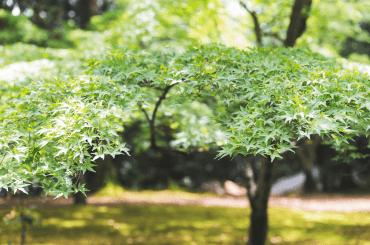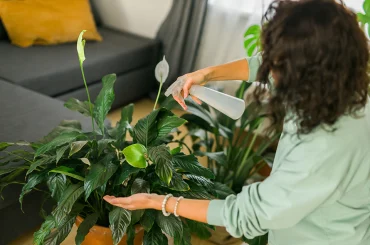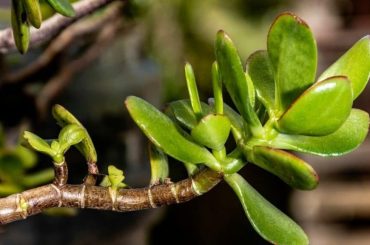Cheese Plant Care Guide

Cheese Plant Care
Mist the leaves now and then in order to keep them clean of dust, but be careful as with the Pothos, they don’t like a tonne of moisture on their soft fleshy leaves.
The Monstera deliciosa is a vigorously fast grower and appreciates the support of a moss pole to climb. In the wild, these plants can grow to about 70 feet long if left unpruned, however indoors they usually range from around 6-8 feet. The giant leaves can measure up to three feet wide in suitable growing conditions.
The Monstera deliciosa is a variety within the species that also includes plants like the Monstera adansonii (with more delicate, heart-shaped leaves). Having fenestrations (holes and splits in the leaves) lets light get to lower parts of the plant, allowing it to mimic how it grows in its natural habitat. These fenestrations grow more prominent as the plant ages, contributing to their unique aesthetic.
Growing Tips and Additional Care
The Monstera deliciosa is adaptable to a variety of environments but primarily found in the wild growing throughout Mexico, Panama, Guatemala and Costa Rica where it grows happily as an understory plant of tropical mid-mountainous or lowland forests. A naturally wild growth vine-liana that could be as tall as 20 meters. Its Latin name of “monstera” also refers to the monstrous size it can grow (and as we mentioned before, its enormous leaves) with the turf growing wild throughout tropical environments. The word “deliciosa” on the other hand refers to how sweet its fruit is and it indeed tastes like a blend between bananas and pineapple, exactly what you would expect from something called Monstera deliciosa.
When grown indoors in the Northern Hemisphere, it seldom blossoms or bears fruit other than inside of a greenhouse or conservatory. The plant is easy to care for and pests avoid it, rendering it perfect for new plant parents and seasoned gardeners. But take care as EVERY part of the Monstera is poison, especially to animals.
Are Swiss Cheese Plants Easy to Care For?
![]()
The Swiss cheese plant is extremely hardy and robust. My Swiss cheese plant, Chaz and his siblings can handle a longer time without water if I have forgotten about them. With their shiny leaves, they have an uplifting kind of vibe in any room, hence they come under the category of feature plant. They have an informal attitude, but are not totally easy to care for: they can be slightly poisonous to cats and dogs and humans. For a person who wants to be safe, keep them away from inquisitive hands and mouths.
About Swiss Cheese Plants
Monstera deliciosa is native to Mexico, Central America, Panama, Guatemala and Costa Rica. It grows in tropical rainforest in these regions, and is found at middle elevations (mid-montane) and lowland areas in places. Smilax is a large liana that can grow up to 20 m. Monstera is the abbreviation of monstrous in Latin, because it can become a huge plant when grown outdoors. Its fruit, supposedly tasting somewhat like fruit salad with hints of banana and pineapple, makes the specific epithet deliciosa. Surprisingly, it is a delicacy in many Central American countries (It´s known as breadfruit in Mexico).
It is a very uncommon form of houseplant in the Northern Hemisphere, it only fruits while left to develop in warm-green houses or conservatories. The growth habit of Monstera deliciosa shows the natural mechanism where it fenestrated to produce holes in its leaves that allow sunlight to pour through onto foliage beneath. Similar to monstera, young plants have fully intact leaves with no fenestrations; as they age and get more light, splits and holes will appear.
How to Look After a Monstera deliciosa (Swiss cheese plant)

Watering:
With Swiss cheese plants, they like to be a little drier. When it’s time to have a drink Chaz, just make sure that the excess water is dribbled out of the drainage holes at the bottom of the pot nursery. This will keep the roots from getting too wet and rotting.
Use the two-inch rule of thumb… If the first couple inches are dry -water Mr. Monster! One of the biggest mistakes people make is overwatering so be very mindful with your watering. You are much better off under-watering your plant than to over water and cause root rot. Opt for a free-draining potting mix with some coarse components such as large bark to kickstart the drainage process.
In the winter, you can water less. Wait until the top inch of soil is dry again to water. The soil should be kept wet but not stopping. Terracotta prevents moisture buildup unlike in a plastic pot
Sunlight:
Swiss cheese plants grow well in a variety of light conditions. These plants like medium light the most ideal plant placement ll keep your philodendron looking pretty for years and aren’ t heavy for beginners. Their leaves feature two distinctive cut-outs, which may never develop if the spot is too dark.
Swiss cheese plants are native to the rainforests of southern Mexico and southward to Panama, where they grow in the shelter of taller trees in bright yet indirect sunlight. They can take a bit of morning sun, but broiling afternoon heat may be too bright. In summer, they can be left outdoors in a filtered light area to avoid scorching their leaves. You’ll have to bring them back inside for the night when temperatures are in the 40’s and below.
They still want good light levels to keep their signature leaf holes. These holes may be brought to its complete depth when grown within the decreased gentle and immature fenestrations might not type. The Monstera, a plant in the same family, will also need lots of bright light (but indirect sunlight). It will scorch its leaves if given too much sun, so only 2 hours of direct morning sunlight is what it needs.
Temperature :
Temperature: Swiss cheese plants come from tropical areas so they are happiest when it’s warm to quite hot (15-30°C). Avoid cold breezes and dry air as much as possible, keep the plant away from drafty windows and radiators. The conditions they prefer remain throughout that time which helps them thrive and maintain the best environment possible. Chaz and his buddy’s love indoor environments where it is neither too hot nor too cold, anything from 60-85 degrees which mimics the cool weather under large trees.
Humidity:
Those identifying as Swiss cheese plant or Monstera prefer humidity. They do best in high humidity — around 60%, which can be achieved through misting their leaves or using a small humidifier. A bathroom that is warm and well lit, but has no drafts are good conditions for raising the humidity naturally. Another aid is to have a tray of water with pebbles placed near the plant.
Fertilizer:
Looking after your Cheese Plant – Feeding your Monstera Cheese Plant: What nutrients and when? Feed with a balanced, liquid fertilizer during the growing season (usually spring and summer). More Beats By Dr. Dre Monster Home Additives are a mixture to solve your houseplant troubles, that may be used as a liquid supplement in keeping with the instructions on the package deal. By following the recommended instructions, it ensures your plant gets what it needs without being bombarded.
During slow, winter months the feed should be cut down to once. The reason behind this is that the plant will get natural cues to start slowing its growth without requiring you to overfeed. A Cheese Plant, if it’s in a good potting mix and has been growing for a while, is mature and often has enough nutrients including some slow release fertilizer. They are extremely beneficial as they release a continuous stream of nutrients to the delicate roots which helps them deal with the shock involved in being relocated and re-potted.
How to Repot Swiss Cheese Plants
Swiss cheese plants are notorious for quick growth and overgrowing their containers, becoming root-bound. Repot when the soil pulls away from the sides of the pot. Take a new container that is one size spawner than the previous one and make sure it has a drain hole so as to not get waterlogged.

Start by gently lifting the plant out of its existing pot, trying to minimize any disturbance to the roots as much as possible. Then, plant it in the new pot and use a stake or moss pole to support the plant while your plants naturally vertical growth kicks in. Tie the stem to support using plant ties until climb; Gently pack additional potting soil around the root ball until all air pockets have been removed and the roots are encased completely.
Lastly, you will want to water the plant in order for it to fully adjust to its new location. Monstera is another plant that spoils in two years and needs a pot transplant. This means repotting it in a larger container with the drain holes at the bottom and gently transplanting it, taking care not to disturb its roots. Aerial roots sometimes can help with adding more nutrients and take away the air, they also can be pushed into the soil to provide a foundation for their tree.
Overview
Swiss cheese plants can be propagated quite easily at home, which is a fun and virtually free way to gain more plantation in your home! Stem cutting and air layering are the two primary methods. They all have their own pros and can be chosen depending on what you find most convenient or if your plant is in distress.
Stem Cutting
This technique involves taking a small cutting, making it ideal for general plant enthusiasts. But start by choosing a healthy stem with some leaves and nodes. Make a clean cut just below a node with sharp scissors, and be sure the cutting is at least several inches long. Snip the bottom leaves and you can see how a node will look like.
Rooting Process
Place the cutting into water or damp soil. Roots should appear in a few weeks at the node. Once the cutting has developed a well-established root system, transplant it into a small and moisten soilless potting mix. Make sure the container has drainage holes and position it in a warm, sunny location out of direct sunlight. Roots must grow, so keep the growing medium slightly moist.
Air Layering
When air layering, find a node on the stem where some aerial roots will occur. This will ensure that there are no tears in your cut, cutting just below the node, wrapping it up in fresh sphagnum moss (soggy). Place plastic film over the top of it and keep the moss well watered. The moss will have roots coming through it after several months. When roots grow, chop the stem and replant it with suitable soil mix in another bigger pot.
How to Prune a Cheese Plant

Regular pruning of your Monstera is important to keep its shape and help it become better. This includes removing yellow and brown leaves from dead stems, along with ensuring you trim leggy stems (it promotes denser foliage). Make clean cuts above a leaf node which helps in fast healing and reduces the plant stress.
Personal Approach
For me, my Swiss cheese plant is in desperate need of a prune — it requires regular grooming to stop it getting out of control. I like to prune mine in the spring, which is when most houseplants do best with a trim. Using sterile pruners, I am doing 25% thinning of the stems.(logging selection) All cuts are carefully made by supporting plant structure. I would deadhead here and there, pruning back as needed and they acted like it was no big deal.
Common Problems With Swiss Cheese Plant

Maintaining the health of a Swiss cheese plant involves recognising these problems and then dealing with them. Here are some of the issues you may face, and how to address them productively.
Wilting and Yellowing Leaves
Wilting Leaves — Swiss Cheese Plant Stress Copyright: elenabsl / 123RF Stock Photo This may be due to either over- or under-watering. If you suspect overwatering is the issue, it’s important to check the roots for rot. If roots are damaged, you may need to re-pot in order to save your plant. If your succulent begins to lose dry leaves, it could be due a lack of humidity or insufficient watering habits.
Sunburn and Leaf Scorch
Swiss cheese plants do not like full sun. Leaves may burn from excessive sun, especially in the heat of growing areas. Dark green leaves should bright slowly to prevent browning from overexposure to light. In the event of scorch, relocate to a shaded position and improve humidity levels likely to promote regrowth.
Soil Moisture and Root Health
The key to the correct watering of Swiss cheese plants is a balance of soil moisture. Excessive watering can cause the roots to rot, while allowing the soil to become overly dry will was stressful on your plant. Check the soil moisture level thoroughly before watering and ensure you water on a pot base plate so any excess water can dribble to stop waterlogging.
Are Cheese Plants Toxic to Pets?
Like most tropical houseplants, such as snake plant and pothos, Swiss cheese plants contain insoluble calcium oxalate crystals that can cause oral irritation if ingested by cats or dogs.

If pets munch on either the leaves and stems of Swiss Cheese Plants they will be exposed to these crystals that are able to irritate their mouths, lips and tongues, accompanied by drooling, vomiting or struggling to swallow. If you think your pet has ingested the plant, it is imperative to call your vet right away, even if symptoms are not yet observed. Immediate response provides the safety of your pet.
Swiss Cheese Plants offer tropical splendor for your home but make sure to position them out of reach from pets or other potential nibblers you will be slower in preventing accidental ingestion. But, care for such plants involves appreciating the visual benefits and taking proper monitoring as well as being aware about the underlying dangers to the pets.
Conclusion
Taking care of typical concerns quickly, along with understanding your Swiss cheese plant will keep it flourishing. Monitor for wilting, check the roots, and control light and water supply resulting in a healthy and lush plant.





